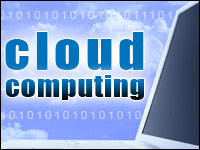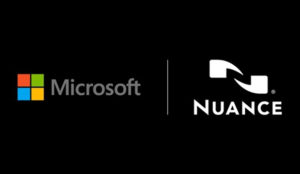
Cloud computing and Software as a Service (SaaS) have emerged as the hot new technology trends in 2009. Companies from Microsoft to Big Blue to Oracle have announced their intentions to move away from their lucrative and proprietary models to address this fundamental shift in how software is delivered.
The shift is not just hype: Microsoft reported in a recent survey that 33 percent of the 1,200 polled organizations plan to convert their application environments away from a traditional, client-server model to one based on virtualization and cloud computing over the next two years.
While promises of cost-savings and lower carbon footprints are highly touted by media and vendors alike, the greatest benefit of SaaS is its ability to liberate corporate IT staffs from routine maintenance and licensing activities in favor of technology initiatives that improve business processes.
Deeper Issues
To get an idea of the dire state of IT within the enterprise today, one needs only to take a look at a few more statistics from the aforementioned Microsoft survey:
- 55 percent of respondents indicate that the economy has changed the role of IT in their organization; and
- 51 percent of respondents say that budget cuts are the biggest barrier to innovation.
This paints the picture of IT staff having to wear many hats within the organization without the resources to do it. Despite promising signs in the economy, this trend will likely continue as the regulatory requirements set by the government are continually bolstered and new mediums — such as social media mobile technologies — add to the complexity of the corporate IT infrastructure.
The SaaS delivery model has the capability to address many of these concerns — but even though the deployment of on-demand services may solve technical issues, it does not solve the deeper issues related to how organization utilize IT in their business.
This, of course, creates another layer of complexity: deciding what business operations to send to the cloud so the company can focus its workforce and resources on important business processes that drive revenue.
Change the Focus
The key question enterprises need to ask themselves is this: “In which IT operations is my company investing large amounts of man power and resources that are not critical differentiators for my business?”
Rather than deploying SaaS technology first and developing policy later, the goal of improving operational efficiency and moving the bottom line should be the foremost thought on an enterprise’s mind.
While many companies are utilizing SaaS in innovative ways, most companies can reap huge rewards by simply dipping their toes into the cloud and farming out IT commodities such as storage-intensive applications, communications and security services.
SaaS applications can make their presence felt immediately. At a minimum, IT staffs are freed from time-consuming maintenance, licensing and updating tasks that are a drain on productivity and do not help network administrators add value to their company’s overall mission.
On-premise point products must bear these burdens and their affiliated costs — and they are only able to solve one IT issue at a time. SaaS allows companies to shift the workload of these baseline uptime operations to someone else and take advantage of the delivery model’s flexibility to offer comprehensive solutions to address business processes.
Simply put, if business processes are flawed, then moving to SaaS will change the focus from running the infrastructure and fighting fires to solving the business problem.
Helpless Guardians
SaaS transforms IT departments into business-enablers that are free to join the discussion on how value can be added to corporate processes. They can spend time advising and architecting IT solutions to support the re-engineered business processes that today’s challenging economy demands. With innovation in many companies hitting a standstill, the recovered resources can be used to fuel a company’s mission-critical operations.
By using the high-level business process efficiency goal, IT departments will not only improve their SaaS-delivered business functions, but also make quantifiable contributions to the company. The alternative? They continue to be perceived as just a cost to the business — the department that says “NO.” Even worse, they can function simply as the guardians of the infrastructure while they watch — or fail to detect — inefficient business processes eating into the profitability of the business.
This is why SaaS partnerships are so important. When making a selection, the key point of discussion should be whether a prospective partner understands your business’ unique needs.
Cookie-cutter solutions are, unfortunately, prevalent at this early stage of the cloud computing evolution, so make sure you thoroughly evaluate the completeness of product and security capabilities of potential partners, particularly in heavily regulated industries such as finance and healthcare.
Maximum ROI
With SaaS’ popularity at a fever pitch, enterprises must be wary of companies hoping to hitch a ride on this trend. Often, vendors that either host information or use a “public cloud infrastructure” are positioning themselves as SaaS companies. To help companies identify organizations that are pure SaaS players, Gartner recently identified three key elements in the true definition of the SaaS model:
- Externally hosted and managed by the provider
- Delivered in a one-to-many delivery model
- Subscribed to on a pay-for-use basis
Other variables companies should discuss with vendors include the distributed environment uptime — it should be somewhere near 99.999 percent — and the extent to which data encryption is included. Protection of customer data is fast becoming mandatory in newly instituted state data security regulations, so it’s always best to be ahead of the curve.
In the end, SaaS makes sense for the large majority. The advantage of this delivery model is that companies do not need to jump into it with both feet. Try focusing on resource-intensive supporting applications first to get the feel for how things work, and then make future decisions based on these experiences.
Goals should be set high, though, as companies only looking to improve their communications or storage processes will succeed but will miss out on larger ROI possibilities. Employing SaaS for many costly, nonbusiness critical initiatives will not only boost the productivity of IT staffs, but also profoundly impact the value to the business.
Mary Kay Roberto is senior vice president and general manager ofMimecast North America, a SaaS provider of a technology platform designed to radically improve the way companies manage their most important business communications and data.














































Nice summary of decision points and planning. You also touched on non-differentiating services and I would suggest there is also a subset I would call cross-organizational collaboration. So many SaaS applications are simply hosted apps when there are real benefits to be gained by facilitating collaboration between organizations. This is where benefits beyond cost savings will be realized.